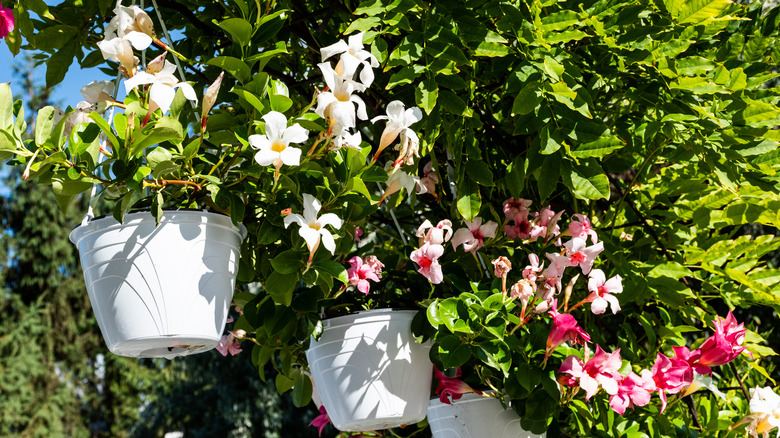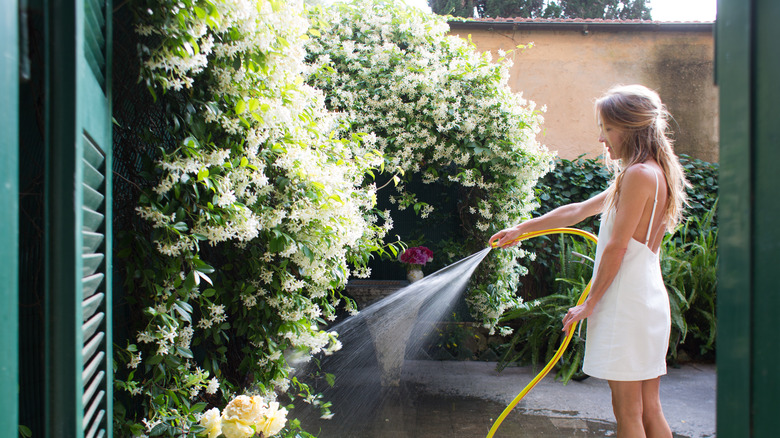Do Jasmine Flowers Grow Better In Pots Or The Ground?
Whether jasmine grows better in pots or the ground is a common question among gardeners, and the answer really depends on a couple key factors: where you live and how much space you have. You'll see jasmine as climbing vines, cascading over trellises, or as neat little shrubs, depending on the variety. Because of this flexibility, jasmine can grow well in both flower pots and the ground, but each option has its own set of perks and drawbacks.
Growing jasmine in pots might be the perfect route for you if your climate has extreme temperatures -– either freezing cold winters or blistering hot summers. The biggest advantage of using a container is that it gives you complete control. If it gets too cold, you can simply move your jasmine indoors or into a sheltered area. Too hot? No problem; shift the pot to a shadier spot and help your plant cool down. This is great for those who live in unpredictable climates or have limited outdoor space, like just a balcony or a small patio. Pots also make it easier to control soil type and moisture levels, so if you're into fine-tuning your plant's environment, this might be your best bet.
But there's a flip side to growing jasmine in pots. Potted jasmine can dry out faster than jasmine in the ground, so you'll need to be on top of watering, especially during warm weather. The limited soil also means you'll have to feed your plant more often since it can't tap into the nutrient-rich soil that ground-planted jasmine has access to. So, if you choose to go the pot route, be prepared for a little more hands-on maintenance.
Growing jasmine in the ground
Now, if you've got the space and live in a climate that doesn't have wild temperature swings, planting jasmine directly in the ground is the way to go. Jasmine loves to spread its roots and soak up nutrients, so if your soil is rich and well-draining, you're setting the stage for some serious growth and a bounty of blooms. Ground planting is ideal for larger varieties that can climb up trellises or cover fences. Plus, you'll likely need to do less watering and feeding because the plant can access a wider range of soil nutrients. Over time, this makes for a lower-maintenance experience.
Of course, planting in the ground comes with its own set of challenges. Jasmine is much more exposed to the elements this way, so you'll have to protect it from the cold if temperatures dip. Mulching around the base of the plant can help, but in really frosty areas, you might need to cover it up or even bring out the frost blankets. Another thing to watch out for is the plant's tendency to spread. Jasmine can be quite the garden invader and keeping this in check might mean regular pruning or setting up barriers to control its growth.
At the end of the day, whether jasmine will thrive better in a pot or the ground really depends on your setup and how much effort you're willing to put in. If flexibility and control sound good to you, pots might be your best bet. But if you have the space and a forgiving climate, planting jasmine in the ground can reward you with a lush, fragrant wonderland.

